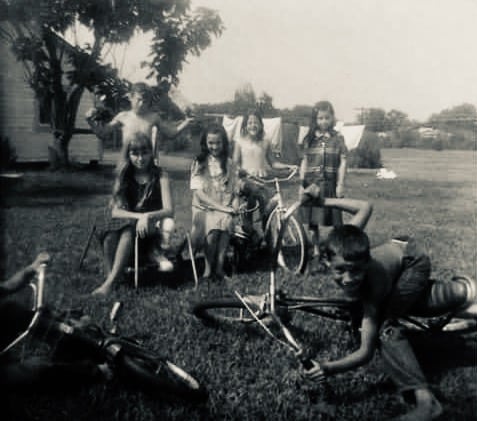If you’re thinking about writing a memoir, you get to decide what to include.
A writer’s first challenge is to make a decision about the nature of an overarching mission for your memoir. Usually a memoir is about your life, yes, but it also carries a weight that others feel in their lives. It will need common ground.
Writing a Memoir is Like Choosing Flowers to Plant
You know you want to put in a garden in your yard, and you get to decide which plants to put in it. You’ll want to choose the ones that belong to your region, and thus belong to you.
From that massive list, which do you include?
All of the plants from which you can choose are like your stories. You have thousands and thousands to choose from. Maybe this is going to be a pollinator garden using native plants. You’ve narrowed down your choices.
Likewise, you winnow your stories down to a type.
Let’s say you’re going to write a spiritual memoir, for example. Or an environmental memoir. Or a memoir about a single canoe trip down the Missouri River. Or the ten years of your life where you lived on a commune.
If You’re Not Sure What to Include When Writing Your Memoir
If your vision is out of focus, I suggest a flow-write. Set a timer for five minutes and keep your pen moving, as Natalie Goldberg advises, starting with this prompt, “What I want to write about it…..”
This will be your driving line or your controlling idea—what the memoir is about. What you include will be the memories, scenes, dreams, reflections, images, and facts that further this vision.
The anecdotes drive the line.
Eliminate scenes and bits that don’t further your controlling idea and, while doing so, discover more parts that do.
Then craft a title for your piece that works as a big city-limits sign. “This is Portland.”
When Writing My Own Memoir, How Did I Pick Memories to Use?
Once an interviewer asked me, “How did you pick and choose memories from childhood to write Ecology of a Cracker Childhood?” (That was my first book, an environmental memoir.)
I tried to pick those anecdotes and memories that would pertain to my main theme or drive my line—in this case the human relationship with nature, or more aptly, how the culture of southern-coastal-plains folk is bound to the ecosystem of longleaf pine.
I needed pieces that would move that particular story forward.
They scenes had to be interesting and lively. They had to be, in other words, scenic. I couldn’t blather on too much about my ideas or thoughts or abstractions. I had to have people moving around, doing things, saying things, smelling liatris in bloom, hearing bobwhites call.
Some of the stories were not my actual memories. I interviewed a lot of people, especially family members, for the book, so some of the stories were other people’s memories. But the rule was, the anecdote couldn’t go into the book unless it drove the line.
Do You Start Winnowing & Weeding Stories Right Away?
Heck to the no. Write everything down at first. Just get started telling the stories. Later you can decide what your memoir is about, what to include, and what to quietly slip into a file for later use. Or into the trash can.
Another Couple of Thoughts About What to Include When Writing a Memoir
I don’t want to add more pain or woundedness to the world. Every scene I include gets evaluated for potential pain it could cause. Sometimes I use it anyway, if the benefit is greater than the pain. Any scene that will cause unnecessary division or hatred I try to discard.
I try not to single anyone out. I more often opt for systemic oppressions rather than individual ones.
I often change names when a scene will implicate someone rightly or wrongly, and the implication doesn’t justify the potential harm. I don’t like to burn bridges. You get to decide this, of course. Tons of memoirists burn lots of bridges, and we live in a culture that likes to cancel people. But that’s a last resort for me.
Write Your Own Story—Beginning Memoir Online Course
If you are ready to leap into the soft, fragile process of writing down your own stories, I’ll be teaching a 10-week class for beginners or fledglings this fall. We’ll meet one hour a week, Mondays 11am-12 noon Eastern Time, live via Zoom, starting October 9, 2023 and going through December 11. We’ll work hard for one hour. The class also includes invitations to optional online Co-working Sessions (Creative Hour) and an Open Mic Online Reading.
This is an entry-level class that doesn’t fail to move you forward in terms of generating writing and learning craft.
If you want to honor an impulse to tell a story lodged inside you, consider signing up. It’s also the most affordable class I offer, $225.
Meeting dates are 10/9, 10/16, 10/23, 10/30, 11/6, 11/13, 11/20, 11/27, 12/4 & 12/11.
Convince a friend to sign up with you so you have a built-in support system and sounding board to explore the landscapes and stories of your life. This is the most potent material on the planet—your stories.
I would love to work with you. Truly.

Leave a Reply